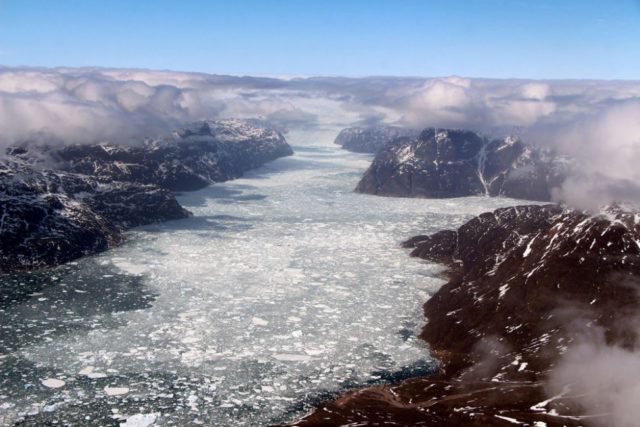April 12 (UPI) — Most of the time, ice helps cool things down, but ice can also help trap heat — for instance, the Inuit people built igloos out of ice to shield themselves from the Arctic cold.
According to a new study, published Monday in the journal Communications Earth and Environment, thick slabs of sea ice have a warming effect on Greenland’s fjords.
During summertime expeditions in 2015 and 2019, an international team of researchers was able to gather a variety of climate data in and around a pair of fjords in northern Greenland.
“These fjords were practically inaccessible to researchers until quite recently because the sea-ice was too thick — they are some of the least-studied areas on the planet, and require a large icebreaker to reach them, even in the summer,” lead researcher Christian Stranne, an assistant professor at Stockholm University in Sweden, said in a news release.
Even in summer, the entrance to Sherard Osborn Fjord remained blocked by a thick slab of sea ice.
The more southerly positioned Petermann Fjord, however, has for several years been open to the Nares Strait, which links the Arctic Ocean with Baffin Bay.
While warmer water can more easily penetrate Petermann Fjord, melting its resident glaciers, researchers found Sherard Osborn Fjord consistently featured higher air temperatures.
In 2019, a heat wave brought record highs to northern Greenland, but researchers found the near-surface air temperatures in Petermann Fjord never rose above zero degrees Celsius.
“But in the Sherard Osborn Fjord, cut off from the open ocean by thick sea-ice, near surface sea temperatures reached 4 degrees Celsius — which was 3 degrees Celsius higher than any previous seawater measurement north of Greenland,” said Stranne.
Scientists found the presence of sea ice trapped meltwater in the fjord. The freshwater sat atop the fjord’s saltwater and warmed rapidly in the sun, encouraging warmer air temperatures and faster glacial melt rates.
The Arctic’s summertime sea ice extent has dramatically shrunk over the last few decades, but in northern Greenland, sea ice often persists. According to the latest findings, sea ice — contortive as it may seem — can make Greenland’s fjords more sensitive to global warming.
The research is another example of the complexities of climate change modeling.
Previously, scientists have shown a fjord’s sensitivity to climate change is related to the contours of the seafloor at its entrance.
“It’s a complex interaction,” Stranne said. “Overall, we know that warming climate will lead to faster moving glaciers and less ice on Greenland. But how fast this happens, and to what extent, remains a key research topic.”

COMMENTS
Please let us know if you're having issues with commenting.